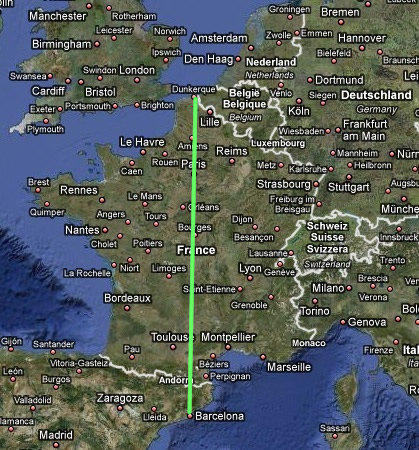![]()
Chemistry Definitions, Prefixes, Metric and SI units
|
Dr. Walt Volland revised June 28, 2013
|
The International System is used in nearly every country in the world. The basic concept of was devised by French and European scientists in the late 18th century to replace the chaotic collection of units then used. The goal of this effort was to produce a system that did not rely on a miscellany of separate standards, and to use the decimal system rather than fractions. A very interesting review of measurement systems through history is available at this NIST National Institute of Science and Technology address. The developers of the system wanted a physical number that was constant. They used a survey (actually only in part) of a quadrant of the earth (one-fourth of a circumference) along the meridian that passes through Paris, France and Barcelona, Spain to obtain a standard of length. The survey results were used to determine the distance from the equator to the north pole along this meridian. The quadrant was divided into 10-million parts and the result was called the meter (spelled metre in some countries). This means the meter was dependent on a physical property of the planet that was considered to be unchanging. The meter was a length unit that was not linked to political policies or royalty.
The physical length was matched to platinum-iridium alloy bars were cast and marked with this length as physical standards of comparison. Modern scientists have redefined the meter in terms of a number of waves of the orange-red light given off by the element krypton (using a light source similar to a neon light). In the 1950's the length of the inch was changed slightly to exactly 2.540 000 000 centimeters, and we in the United States have had our length, area, and volume units based on the metric system ever since. This metric basis does give us the advantage of the decimal nature of the metric and SI systems. |
